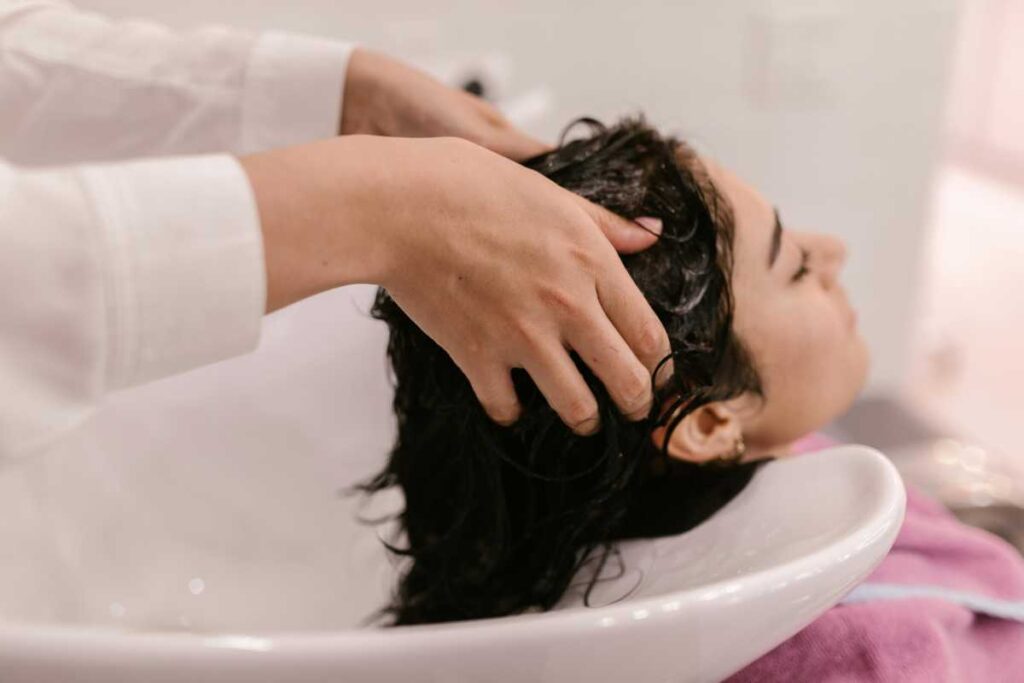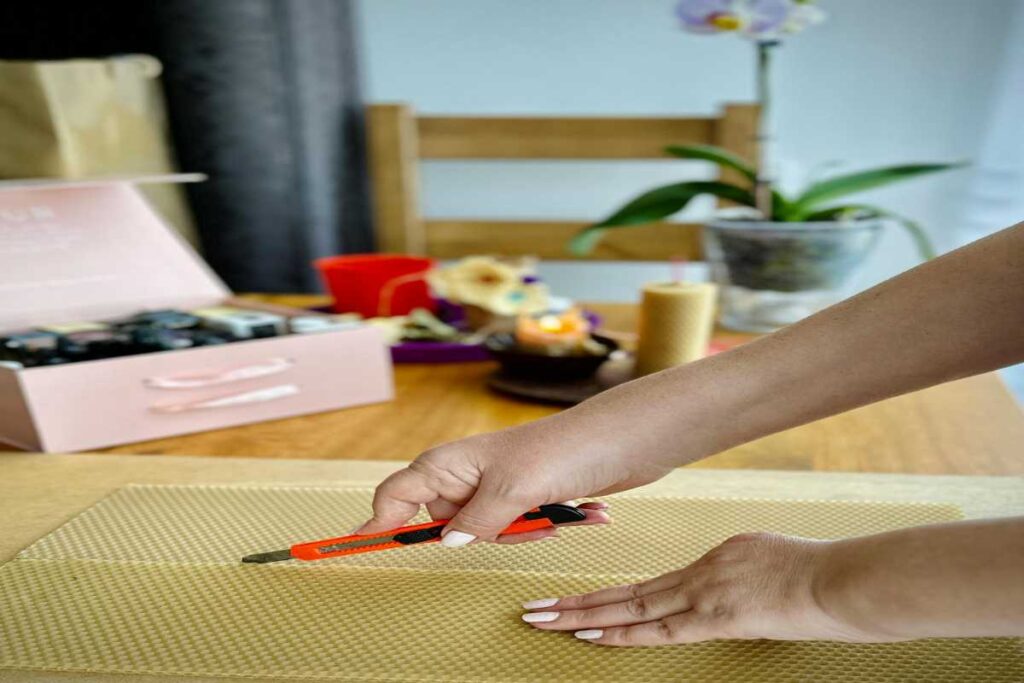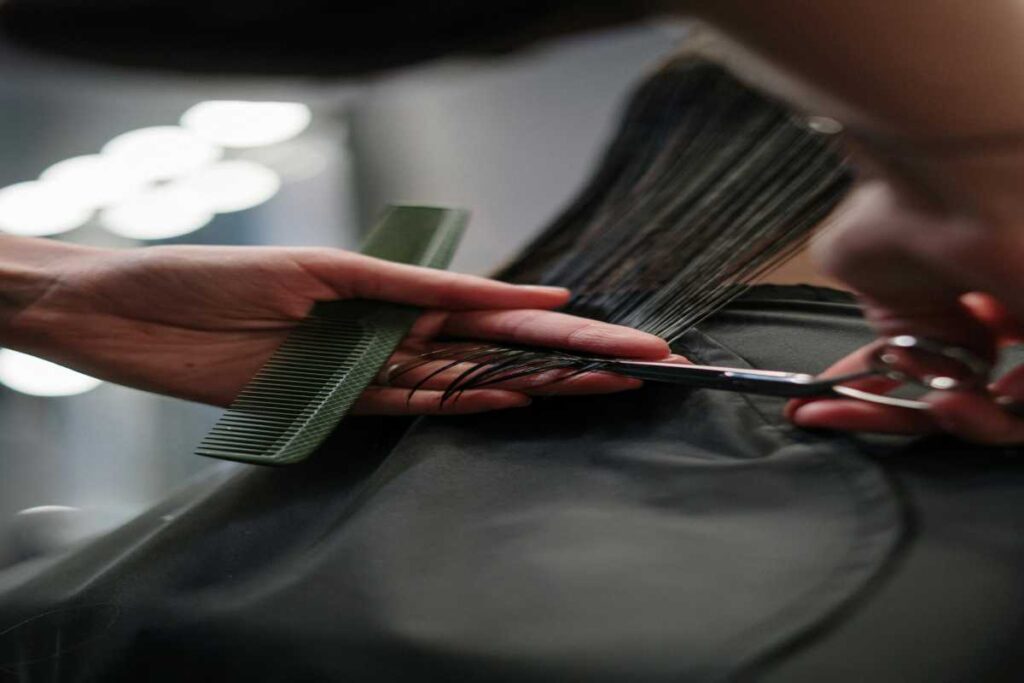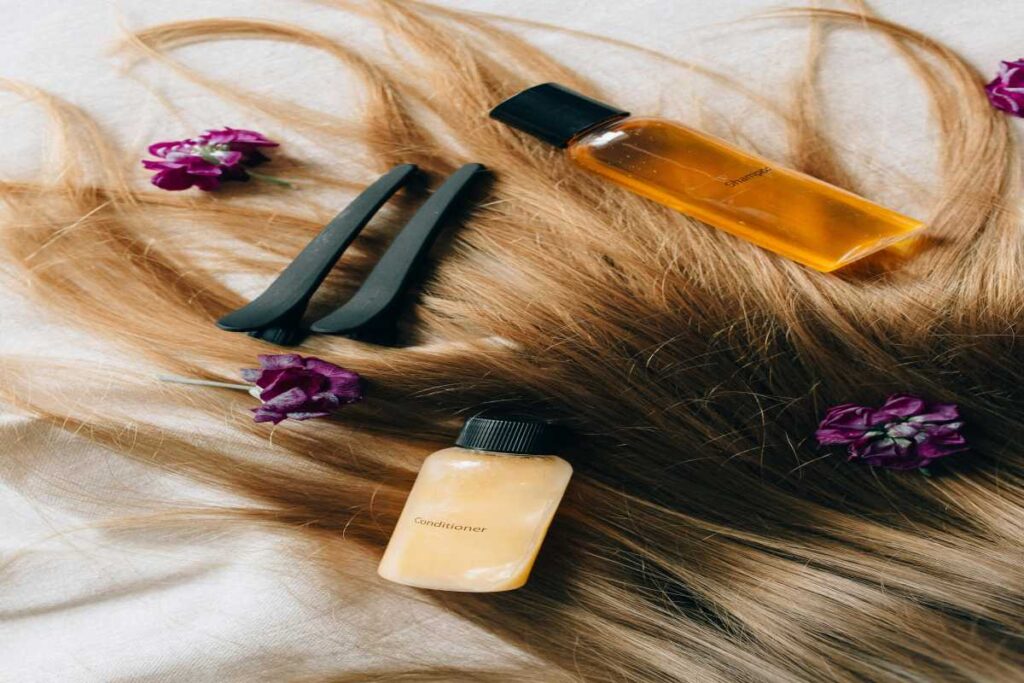Coconut oil is a popular natural treatment for hair because of its deep conditioning and nourishing properties. However, removing it from your hair can sometimes be tricky, especially if you’ve applied a generous amount. While coconut oil is great for moisturizing and strengthening hair, it can leave your hair feeling greasy if not properly washed out. Below are 12 natural and effective methods to remove coconut oil from your hair without harsh chemicals.
1. Use a Clarifying Shampoo
Clarifying shampoos are designed to remove excess oil, buildup, and impurities. This type of shampoo is perfect for washing out coconut oil, as it deeply cleanses the scalp and hair.
- How to use: Wet your hair, apply a generous amount of clarifying shampoo, and work it into a lather. Rinse thoroughly. You may need to shampoo twice to fully remove the oil.
- Tip: Be mindful not to overuse clarifying shampoo, as it can strip natural oils from your hair if used too frequently.
2. Regular Shampoo + Dish Soap
If you don’t have a clarifying shampoo, regular shampoo combined with a small amount of dish soap can help break down the oil.
- How to use: Mix a few drops of dish soap with your regular shampoo. Lather it into your hair and rinse. Follow up with a deep conditioner to restore moisture.
- Tip: Dish soap is effective in removing grease, but it’s drying, so don’t use it too often.
3. Baking Soda and Shampoo
Baking soda is another natural option for removing oil from your hair. It helps absorb excess grease and buildup.
- How to use: Mix a tablespoon of baking soda with your regular shampoo. Apply the mixture to wet hair and work it into a lather. Rinse thoroughly and condition.
- Tip: Baking soda can be drying, so be sure to moisturize your hair afterward with a good conditioner.
4. Apple Cider Vinegar Rinse
Apple cider vinegar (ACV) helps to remove product buildup, balance the scalp’s pH, and eliminate excess oil.
- How to use: Mix 1 part apple cider vinegar with 3 parts water. After shampooing, pour the mixture onto your scalp and hair, then rinse with cool water.
- Tip: ACV also adds shine to your hair, so it’s a great post-wash treatment.

5. Lemon Juice and Water
Lemon juice is known for its oil-cutting properties and can help cleanse your scalp and hair of coconut oil residue.
- How to use: Mix the juice of one lemon with 1 cup of warm water. After shampooing, apply the mixture to your hair and scalp. Massage gently and rinse thoroughly with warm water.
- Tip: Lemon juice can make your hair dry, so follow with a conditioner to restore moisture.
6. Aloe Vera Gel
Aloe vera not only hydrates the scalp but also helps to break down oils and product buildup in the hair.
- How to use: Apply a small amount of aloe vera gel to your scalp and hair, massaging it gently. Leave it on for a few minutes, then wash your hair with your regular shampoo.
- Tip: Aloe vera also helps soothe the scalp if you have any irritation from the coconut oil.
7. Warm Water and Shampoo
Sometimes, simply using warm water to rinse out the coconut oil can help break it down, especially if you haven’t applied too much.
- How to use: Wet your hair with warm water and apply a generous amount of shampoo. Massage the shampoo into your scalp and hair, then rinse thoroughly. Repeat as necessary.
- Tip: Warm water helps loosen the oil, making it easier for the shampoo to remove it.
8. Castile Soap
Castile soap is a natural soap that effectively removes oils and dirt without drying out the hair.
- How to use: Apply a small amount of liquid Castile soap to wet hair. Lather it into your hair, then rinse thoroughly with warm water.
- Tip: Castile soap is gentle on the scalp and hair, so it can be used more frequently without stripping moisture.
9. Herbal Teas (Chamomile, Peppermint, or Green Tea)
Herbal teas like chamomile, peppermint, or green tea can help cleanse and refresh your hair while breaking down coconut oil.
- How to use: Brew a strong cup of tea, let it cool, and use it as a final rinse after shampooing your hair.
- Tip: Herbal teas also provide nourishment, antioxidants, and scalp soothing benefits.
10. Coconut Oil and Sugar Scrub
If you’re struggling to get coconut oil out of your hair, using a sugar scrub can help lift and dissolve the oil without harsh chemicals.
- How to use: Mix a tablespoon of sugar with your regular shampoo. Massage the mixture into your scalp and hair, focusing on the areas with the most oil. Rinse thoroughly and follow with a conditioner.
- Tip: Sugar exfoliates the scalp and helps remove buildup, but be gentle to avoid scalp irritation.
11. Coconut Oil and Salt Scrub
Combining coconut oil with salt can work as a natural scrub to help remove excess oil and buildup.
- How to use: Mix a tablespoon of sea salt with a teaspoon of coconut oil. Gently massage this mixture into your scalp for a few minutes before rinsing with warm water.
- Tip: Be careful not to scrub too aggressively, as the salt can irritate the scalp if used too roughly.
12. Tea Tree Oil Shampoo
Tea tree oil is known for its antifungal and antibacterial properties, making it a great natural remedy for cleansing the scalp and removing coconut oil buildup.
- How to use: Add a few drops of tea tree oil to your regular shampoo. Lather it into your hair, then rinse thoroughly.
- Tip: Tea tree oil can be very potent, so use it sparingly to avoid irritation.
Conclusion
Coconut oil can be incredibly beneficial for your hair, but sometimes it can be a challenge to wash out. Whether you’re using a clarifying shampoo, a DIY scrub, or natural ingredients like apple cider vinegar or baking soda, these methods will help you effectively remove coconut oil from your hair. Always follow up with a deep conditioner to restore moisture, as some of these methods may leave your hair feeling dry. By using the right techniques, you can enjoy the benefits of coconut oil without worrying about it weighing down your hair.
How to Wash Coconut Oil Out of Hair: 12 Natural Ways
Coconut oil is a popular natural treatment for hair because of its deep conditioning and nourishing properties. However, removing it from your hair can sometimes be tricky, especially if you’ve applied a generous amount. While coconut oil is great for moisturizing and strengthening hair, it can leave your hair feeling greasy if not properly washed out. Below are 12 natural and effective methods to remove coconut oil from your hair without harsh chemicals.
1. Use a Clarifying Shampoo
Clarifying shampoos are designed to remove excess oil, buildup, and impurities. This type of shampoo is perfect for washing out coconut oil, as it deeply cleanses the scalp and hair.
- How to use: Wet your hair, apply a generous amount of clarifying shampoo, and work it into a lather. Rinse thoroughly. You may need to shampoo twice to fully remove the oil.
- Tip: Be mindful not to overuse clarifying shampoo, as it can strip natural oils from your hair if used too frequently.
2. Regular Shampoo + Dish Soap
If you don’t have a clarifying shampoo, regular shampoo combined with a small amount of dish soap can help break down the oil.
- How to use: Mix a few drops of dish soap with your regular shampoo. Lather it into your hair and rinse. Follow up with a deep conditioner to restore moisture.
- Tip: Dish soap is effective in removing grease, but it’s drying, so don’t use it too often.
3. Baking Soda and Shampoo
Baking soda is another natural option for removing oil from your hair. It helps absorb excess grease and buildup.
- How to use: Mix a tablespoon of baking soda with your regular shampoo. Apply the mixture to wet hair and work it into a lather. Rinse thoroughly and condition.
- Tip: Baking soda can be drying, so be sure to moisturize your hair afterward with a good conditioner.
4. Apple Cider Vinegar Rinse
Apple cider vinegar (ACV) helps to remove product buildup, balance the scalp’s pH, and eliminate excess oil.
- How to use: Mix 1 part apple cider vinegar with 3 parts water. After shampooing, pour the mixture onto your scalp and hair, then rinse with cool water.
- Tip: ACV also adds shine to your hair, so it’s a great post-wash treatment.
5. Lemon Juice and Water
Lemon juice is known for its oil-cutting properties and can help cleanse your scalp and hair of coconut oil residue.
- How to use: Mix the juice of one lemon with 1 cup of warm water. After shampooing, apply the mixture to your hair and scalp. Massage gently and rinse thoroughly with warm water.
- Tip: Lemon juice can make your hair dry, so follow with a conditioner to restore moisture.
6. Aloe Vera Gel
Aloe vera not only hydrates the scalp but also helps to break down oils and product buildup in the hair.
- How to use: Apply a small amount of aloe vera gel to your scalp and hair, massaging it gently. Leave it on for a few minutes, then wash your hair with your regular shampoo.
- Tip: Aloe vera also helps soothe the scalp if you have any irritation from the coconut oil.
7. Warm Water and Shampoo
Sometimes, simply using warm water to rinse out the coconut oil can help break it down, especially if you haven’t applied too much.
- How to use: Wet your hair with warm water and apply a generous amount of shampoo. Massage the shampoo into your scalp and hair, then rinse thoroughly. Repeat as necessary.
- Tip: Warm water helps loosen the oil, making it easier for the shampoo to remove it.
8. Castile Soap
Castile soap is a natural soap that effectively removes oils and dirt without drying out the hair.
- How to use: Apply a small amount of liquid Castile soap to wet hair. Lather it into your hair, then rinse thoroughly with warm water.
- Tip: Castile soap is gentle on the scalp and hair, so it can be used more frequently without stripping moisture.
9. Herbal Teas (Chamomile, Peppermint, or Green Tea)
Herbal teas like chamomile, peppermint, or green tea can help cleanse and refresh your hair while breaking down coconut oil.
- How to use: Brew a strong cup of tea, let it cool, and use it as a final rinse after shampooing your hair.
- Tip: Herbal teas also provide nourishment, antioxidants, and scalp soothing benefits.
10. Coconut Oil and Sugar Scrub
If you’re struggling to get coconut oil out of your hair, using a sugar scrub can help lift and dissolve the oil without harsh chemicals.
- How to use: Mix a tablespoon of sugar with your regular shampoo. Massage the mixture into your scalp and hair, focusing on the areas with the most oil. Rinse thoroughly and follow with a conditioner.
- Tip: Sugar exfoliates the scalp and helps remove buildup, but be gentle to avoid scalp irritation.
11. Coconut Oil and Salt Scrub
Combining coconut oil with salt can work as a natural scrub to help remove excess oil and buildup.
- How to use: Mix a tablespoon of sea salt with a teaspoon of coconut oil. Gently massage this mixture into your scalp for a few minutes before rinsing with warm water.
- Tip: Be careful not to scrub too aggressively, as the salt can irritate the scalp if used too roughly.
12. Tea Tree Oil Shampoo
Tea tree oil is known for its antifungal and antibacterial properties, making it a great natural remedy for cleansing the scalp and removing coconut oil buildup.
- How to use: Add a few drops of tea tree oil to your regular shampoo. Lather it into your hair, then rinse thoroughly.
- Tip: Tea tree oil can be very potent, so use it sparingly to avoid irritation.
Conclusion
Coconut oil can be incredibly beneficial for your hair, but sometimes it can be a challenge to wash out. Whether you’re using a clarifying shampoo, a DIY scrub, or natural ingredients like apple cider vinegar or baking soda, these methods will help you effectively remove coconut oil from your hair. Always follow up with a deep conditioner to restore moisture, as some of these methods may leave your hair feeling dry. By using the right techniques, you can enjoy the benefits of coconut oil without worrying about it weighing down your hair.




